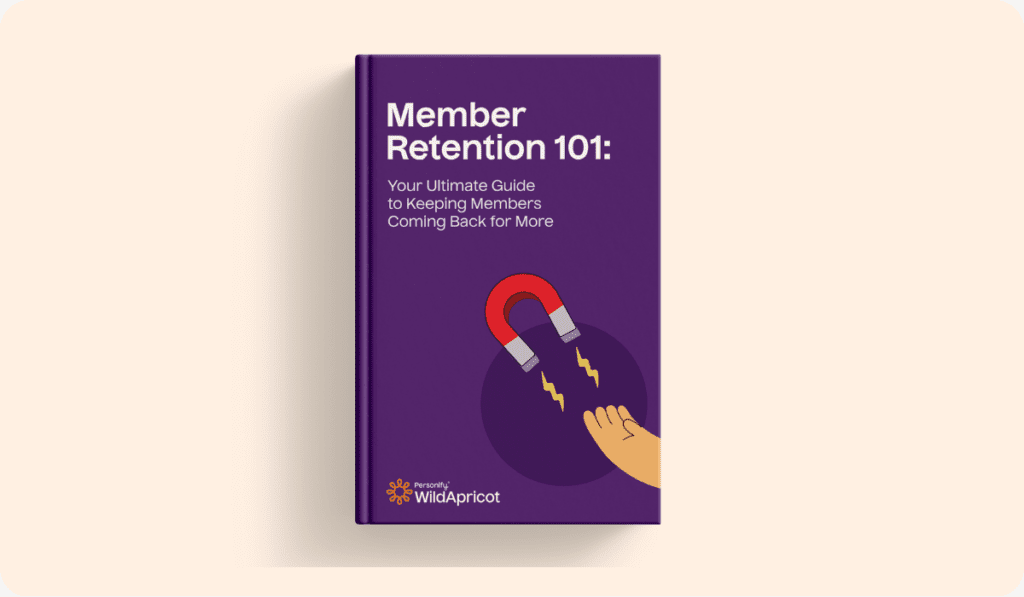Are your organization’s members getting the most out of their membership?
Gaining your member’s feedback is key for ensuring you provide a positive experience for members and build a healthy organization. But what would a good member feedback process look like? Should you send a survey? What if no one participates?
What’s So Great About Member Feedback?
Many organizations are afraid to ask for the opinions of their members because it can quickly turn into a boat load of criticisms and negative feedback. Member feedback is much more than a complaints box. It can help you target your programs, build community and increase member satisfaction.
A regular feedback process ensures that the “complainers” and naturally outspoken aren’t the only ones who ever give you an opinion. By soliciting feedback from your entire membership, you give everyone a chance to be heard.
Member feedback can also help you head off members who are planning on leaving before they do so. Many people leave organizations without ever raising the reasons why, and a feedback process gives them the opportunity to address any problems they’re having. This can drastically help with member retention and strengthen your membership.
4 Top Ways to Collect Member Feedback
Collecting the valuable insights your members will give can be done in a few ways. Depending on your organization, you’ll want to utilize one or more of these techniques!
Member Feedback Survey
Online surveys are easy to build and share using tools like Survey Monkey, Jotform and Google Forms. We even have a Google Forms template for you to use, simply make a copy in your own Google account and make the edits needed for your specific organization. If you’re a WildApricot customer, you can do it directly within our platform.
Your member feedback survey should be similar to a customer experience survey you may receive after shopping, dining out or attending an event.
Your can create your own questions and give members yes-no, multiple-choice or open-form options to answer. Online surveys are easy to anonymize and aggregate all the data for you. Plus having anonymous surveys will increase the survey participation, sometimes people don;t want to share their constructive feedback if it’s tied to their name.
Surveys are particularly useful for collecting feedback immediately after events. Send it promptly after a member event so that memories are fresh and impressions are still strong.
Good For: Specific questions, regular check-ins, event feedback, and group decision making.
Member Forum
If you want to provide members with an ongoing opportunity to give and discuss feedback, a member forum on your website (in the members-only area) can be a good solution. It’s one we use here at WildApricot to learn about ideas for new features or improvements we could make to our platform.
A member forum will work best when you establish some general rules for engagement, such as requiring descriptive subject lines and respectful discussion. It’s a good idea to prohibit spam and self-promotion as well so your feedback forum stays focused on the member experience and ideas for improvement.
Good For: General feedback, brainstorming, “taking the pulse” of your membership, learning about issues you otherwise might not hear about.
Website Pop-Up
A pop-up on your website is a great way to learn about the user experience of your website, but can also be used to ask members questions, conduct polls or invite their general feedback. If you have an active community on your website, this is a good place to pop a question.
Consider asking a quick multiple choice question like “What should our next event be?” with 3-4 options or “Are you liking the members-only section of our website?” Your website pop-up could also be a link to a more comprehensive survey like ” Would you be willing to share you member experience as a part of [ORGANIZATION]” with a button to give feedback.
Good for: Getting feedback on your website, asking quick questions, gauging satisfaction with your online processes.
Phone Call
If your membership isn’t very tech-savvy, a good ole phone call can be a great way to receive feedback from your members. Taking the time to call members shows them that you truly care about their member experience, builds levels of trust and allows you to have an authentic conversation.
It’s smart to schedule these calls in advance. During your next meeting or in your newsletter, inform your membership about your goals for feedback. Those that would rather chat on the phone can reserve some time on your calendar for their member feedback.
Take the time during your member feedback call to share about your organization’s membership benefits. If your call has a negative feedback in it, this give you the chance to show your members you are listening and you can remind them the reasons they joined – hopefully eliminating potential for lapsing.
Good for: Members who have suggestions for improvement, making feedback accessible for everyone and building rapport with members.
Providing multiple communication channels for your members to provide their feedback makes it easy for you to hear from all types of members. Some like talking directly about their experience and some might want to fill out a quick survey. It’s important to provide options so you can collect feedback from everyone.
Member Feedback Dos and Don’ts
Collecting member feedback isn’t difficult, but there are some best practices to follow to get the best results and most responses.
Do:
- Keep your expectations reasonable– Not every member will complete your survey or participate in the discussion. Response rates will vary, but will likely not approach 100%.
- Set a goal –What do you want to know? Set a specific goal for the feedback you’re collecting from your members. Will it help you make a decision, change something or learn more about your members? Having a goal stops you from asking questions just for the sake of asking.
- Make feedback collection a consistent process– Regularly soliciting member feedback is better than a haphazard approach. Whether it’s an annual satisfaction survey or committing to sending two questions after every event, consider making feedback a consistent part of your member communications.
- Keep it short– Filling out surveys or answering questions takes time. The quicker and easier you can make it for your members, the more likely they are to actually complete it. (If you’re looking for a Google Forms example, check out our member satisfaction survey template.)
- Provide space for open feedback– Most of your questions for your members will probably be yes-no or multiple-choice, like, “Do you want to meet in the morning or evening?” or “Should the annual dinner remain in December?” That’s fine! Those kinds of questions get right to the point and ask what you want to know. Just remember to leave space for members to enter their own comments, too. That’s how you’ll find out new things about their interests and concerns.
Don’t:
- Ask for feedback you’re not going to use– There is no point in asking for member feedback you’re not going to use. Ask people about things you’re willing to take action on, and make a plan for responding to the feedback they give you. If members get the sense that they fill out surveys and send them into the void, they’ll stop responding.
- Ask more than one question at a time– “Was our event space clean and well-organized?” “Was the film enjoyable and family-friendly?” “How satisfied are you with the club meetings and programs?” These look like single questions but actually contain two or three. What if the event space was clean but disorganized? The film family-friendly and very boring? The club meetings a headache, but the program excellent? Known as the “Double-Barrelled Question,” this can confuse your respondents and skew your results. Ask questions one at a time.
- Delay event surveys– Get your event surveys out as soon as possible. People will quickly forget the details, otherwise, and you won’t get as much information. Aim for within 24 hours of the event. It’s a good idea to have your survey ready before your event and automate it to send to your members the next morning.
Member Feedback is Essential
When you start checking in on your members in a regular cadence, you’ll see more positive feedback, increased member engagement and higher levels of member retention. Members want to feel like their voice is heard and this is done through seeking consistent feedback. Make sure you maintain a positive feedback culture where members can feel safe sharing their opinions.
Member feedback is a powerful tool to make sure you maintain a good relationship with your members and allows you to make changes to improve the member experience. This also provides you with valuable context on your organization’s health.
Your next steps to improving your membership is to show your members how much you care! Read our next blog on How to Host a Member Appreciation Week (+ 10 More Ideas!) here!








